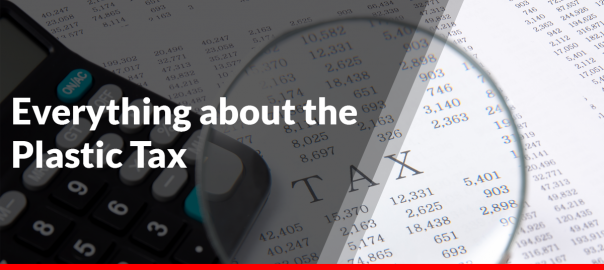Introduction
You may be aware that European member states will have to pay a ‘plastic tax’ (plastic levy) to Brussels as of 1 January 2021. Unfortunately, there is a lot of uncertainty about this new tax.
In this article, we would like to explain what this ‘plastic tax’ actually entails and what consequences it may have for companies that purchase plastic packaging.
The details of the plastic tax
Each EU member state has to pay €0,80 tax per kilo of non-recycled plastic waste to Brussels. This amount is calculated not only on the basis of the quantity of plastic packaging material put on the market, but also on the basis of the amount that is recycled.
Despite the enormous efforts of us as a producer, of you as a customer and the recycling industry, currently only 37% of the plastic waste in the Netherlands is recycled. One of the reasons for this may be that the waste is heavily contaminated or that it consists of multiple materials (multilayer laminates).
Although there is no mention of national taxes in this new tax measure, the payments will come from the national budget. As a result, it will be necessary (not mandatory) for the member states to recoup the payments by levying tax on companies that use these types of packaging.
We already see this in other European member states. For example, Italy levies tax on single-use plastic, with the exception of compostable plastic or plastic made from recycled materials. In addition, Finland levies a tax on plastic packaging that is not made from renewable natural resources. Whereas Lithuania taxes multilayer laminates. We see that the United Kingdom focuses on plastic packaging that does not consist of at least 30% recycled plastic.
There is a chance that the Netherlands (and even more member states) will also find a way to pass on this tax to companies.
How can we help you with this?
- Advising on using recycled material
- Mono-PE laminates as replacement for non-recyclable laminates
- Thickness reduction
Using recycled material
Apart from the environmental benefits of using recycled materials, it can also mean that you have to pay less tax. Chances are that the Netherlands will levy a tax on packaging that consists of little or no recycled plastic, like the United Kingdom. Furthermore, it’s likely that the Netherlands will levy a tax on the use of virgin material. Meaning that if you use non-recycled plastic, there is a good chance that you will have to pay more tax than if you use recycled plastic.
KIVO is able to advise you on the regulations regarding the use of recycled plastic and the possibilities regarding the use of the amount of recycled plastic (PCR content). We achieve outstanding results with the use of recycled plastic with quantities between 10% and 95% PCR!
Replace non-recyclable laminates with recyclable PE film
We see that many member states levy taxes on multilayer laminates. These are, as the description indicates, films consisting of different types of material. KIVO has recently been able to replace some non-recyclable laminates with recyclable PE films without losing specific features. By doing so, you are not only reducing the negative effect on the environment, but also diminishing the risk of paying this new tax.
Laminates are often the result of marketing and/or functional requirements. The material shines beautifully, it has a certain strength, it is resistant to high temperatures in the production process and in a number of cases it provides the necessary barrier for a longer shelf life. For a large number of packaging applications, we see that the laminate can be easily replaced by a non-laminated PE variant that is perfectly recyclable. An example is the frozen packaging for fruit, vegetables and fries. Our special (FFS) PE film with extra stiffness can provide the desired stiffness without compromising important properties such as the protection and shelf life of the product. Meanwhile, we can also supply this film in a variant that can be processed on heat seal systems without any problems.
In addition to that, we are also busy with the development of recyclable laminates (without the use of adhesives), where two types of PE (instead of PET or OPA with PE) are used. This alternative offers opportunities for standup pouches for soup and coffee. The challenge to make laminates recyclable is to create beautiful PE alternatives that also withstand the production process and further processing at the customer. Ultimately, we want to bring a non-laminated PE variant onto the market for the standup pouches.
Downgauging
The use of thinner films requires less raw materials, more meters on the roll and results in less waste. Downgauging of up to 50% are no exception for KIVO. A faster reduction of the impact on the environment is hardly possible and by using less plastic packaging material in kilograms, you avoid paying extra taxes. Therefore this is a positive development in multiple ways.
Conclusion
At this moment we can only speculate about the possible measures the Dutch state will take to fund the packaging tax it has to pay to Brussels. Looking at the countries around us, the obvious choices are:
- Encouraging the use of recycled materials
- Stimulating the use of raw materials from renewable sources (renewables)
- Encouraging recyclable and/or compostable packaging
We can imagine that higher taxes will apply to packaging that does not meet the set conditions.
Do you have any questions about this article?
We are happy to help you think about how improving your current film usage can help you to achieve your business goals. You can contact us by using the contactform below.

